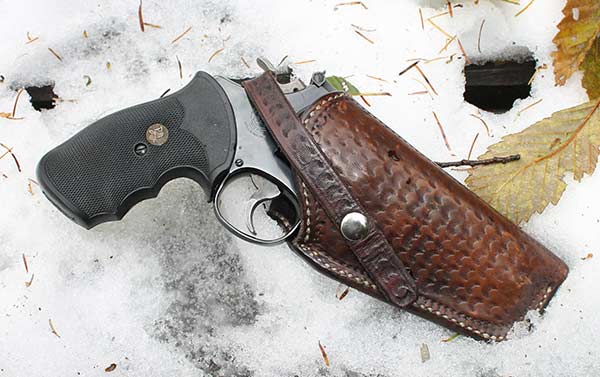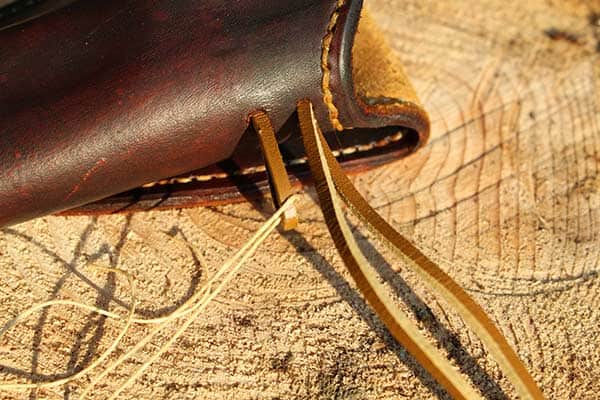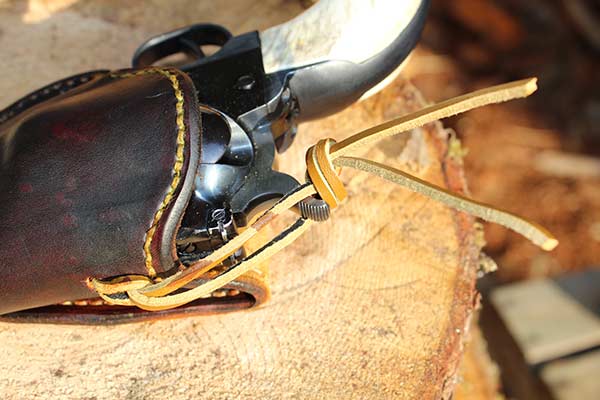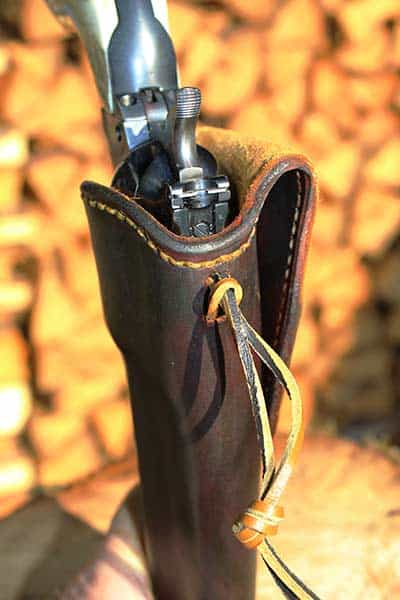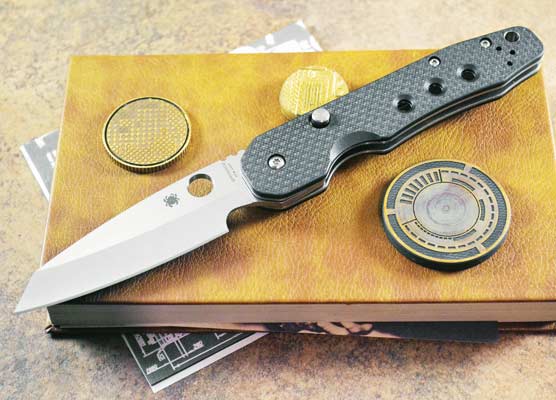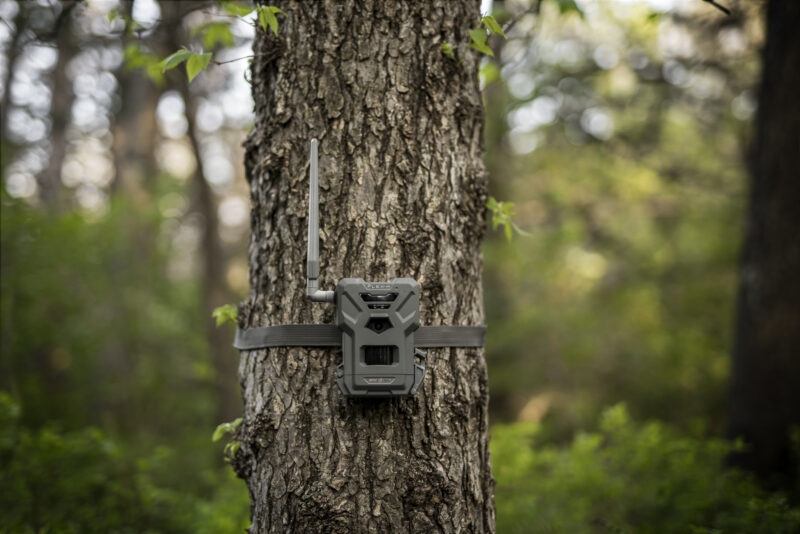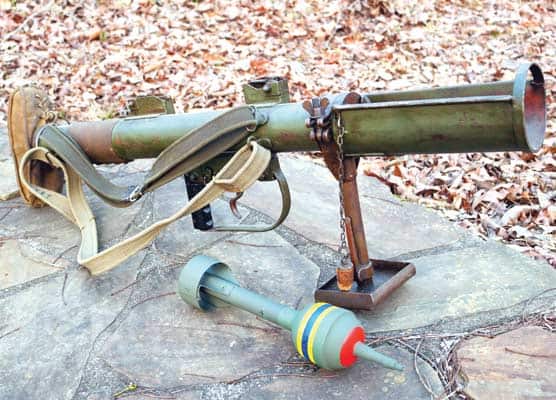The Thong Thing
For Those Who Like Old-Style Hammer Leather
Those of us who grew up digesting a steady diet of big and small screen westerns are certainly familiar with holsters and sixguns, and whatever else we gleaned from watching heroes and villains, we became familiar with “the signal.”
You know; when some hombre visibly reached down, pulled the leather loop from around the hammer of his shootin’ iron, it was the signal somebody was about to get drilled. Plugged. Okay, shot down like a dirty dog.
We saw it a couple of times in “The Magnificent Seven,” when in separate scenes, Yul Brynner and Steve McQueen both cleared the leather thong holding their wheelguns securely in their holsters, visibly pushing the leather downward. There is more to this than Hollywood drama. Hammer thongs actually work remarkably well and over the years I’ve learned how to quickly replace ones that went bad, and how to make them work even better.
Before saying “Who gives a turkey?,” if you’ve never taken a spill while hiking or hunting in a nasty place, do not sell short what you’re about to read.
I’ll preface my remarks by noting there is nothing wrong with straps and snaps. They’re present on nearly every holster I’ve ever owned for double-action revolvers and semi-auto pistols, because they work. However, when packing a six-shooter, nostalgia has admittedly taken over, and I am but a weak-willed subject of too many Randolph Scott matinees.
I see really fine holsters for single-action revolvers by top names in the business featuring hammer thongs, so I’m hardly alone as a throwback. But I might just be a bit off the trail because of the way I do the “Thong Thing.”
Installation Tip
A very long time ago, I learned the quickest way to replace a damaged hammer thong is to pull the worn leather and use a long piece of heavy thread or string (you can substitute monofilament fishing line) as a guide to pull the replacement through the holes in the front bend of the holster. There should be two holes, one above and one below. Your pull string or thread should be several inches long.
Instead of going through the bottom hole first and then bringing the thong back out through the top hole, I cut my leather a little longer and do it in reverse. For this task, I recommend spending a couple of dollars on a pair of good leather shoelaces, dip them or rub them with Neatsfoot oil or something comparable to prevent cracking (and subsequent future failure) and start by pulling the lace through the top hole into the holster interior and back out again through the bottom hole.
Next, run the ends of your leather strap down through the protruding loop, and pull them back tight against the holster surface. This accomplishes an important task. Thus, looped from the bottom, when the hammer thong is released, it automatically is pulled forward and away, and then downward.
Remember what I said earlier: Make your lacing longer, and here’s why. Bring the leather laces up and measure them against the holstered — and unloaded — handgun’s hammer, and then tie the laces in a knot. This will then fit over the hammer as a retention device.
But wait! We’re not finished yet. This is where you get a refresher on gravity and the importance of the twist, and we’re not talking about an old Chubby Checker song. A hammer thong that easily goes over the hammer can flip off just as easily, and typically unbeknownst to the person packing the hardware.
Recall I mentioned a few paragraphs earlier about soaking your replacement leather thong in oil to help preserve it. There’s another, perhaps equally important, reason for this procedure. It adds just enough weight to the leather to allow the thong to drop out of the way (without being pushed downward) to remove any obstruction during the draw. That knot you tied also adds a bit of weight, further contributing to your hammer thong dropping down the front of the holster.
Back to the twist. Before slipping the leather thong over the hammer, give it a couple of twists. This tightens the leather down and also adds tension to the leather surrounding your revolver hammer. Trust me, this works, and in my personal experience, it can save your gun from falling loose in the event you take a wrong step on a hillside somewhere.
What’s Next?
We’re still not quite finished. Holster maintenance is not just rubbing saddle soap inside to slick up your quick draw. (I have no idea if that’s an old gunslinger’s trick, or even if it works. I was never in a western film.)
I’ve said it before because it can’t be said enough. Treat leather kindly and it will serve you for years. This includes hammer thongs, which are the subject of this little essay.
There is yet another purpose of the knot which now touches the hammer. It provides a solid surface for pushing the leather off with the thrust of a thumb or by popping it off with a gentle tug of your thumb and trigger finger — keeping that finger busy and away from the trigger! — and just allow the thing to fall away.
The most important thing is to use the hammer thong. It’s not just a decoration, it is a holster component designed for securely holding your valuable sidearm in the leather. If you choose to have one, rather than a strap and snap, make its use a reflexive action, something you eventually do without even thinking about it. It may look good on the silver screen, but it is a practical part of your rig not to be dismissed.
Final Rule
By the time you read this, the Biden administration will likely have appealed a June 30 decision by U.S. District Judge Reed O’Connor in Texas, striking down the ATF’s “final rule” which treated firearm components the same as completed guns.
The case was brought last year by the Firearms Policy Coalition, and in December, the Second Amendment Foundation was allowed to intervene as a plaintiff, along with several others. At issue is whether the ATF overstepped its authority to literally re-write the law. Judge O’Connor, who was nominated to the court by former President George W. Bush, said “no.”
“A part that has yet to be completed or converted to function as frame or receiver is not a frame or receiver,” the judge said in his 38-page ruling. “ATF’s declaration that a component is a ‘frame or receiver’ does not make it so if, at the time of evaluation, the component does not yet accord with the ordinary public meaning of those terms.”
He said something else which had a bite: “If these administrative records show, as Defendants contend, that ATF has previously regulated components that are not yet frames or receivers but could readily be converted into such items, then the historical practice does nothing more than confirm that the agency has, perhaps in multiple specific instances over several decades, exceeded the lawful bounds of its statutory jurisdiction. That the agency may have historically acted ultra vires does not convince the Court it should be permitted to continue the practice.”
All of this is happening in large part thanks to the 2022 Bruen ruling by the Supreme Court, which shifted the playing field in favor of the Second Amendment as originally written, at the time it was done. The gun prohibition lobby has been complaining that the courts are rewriting the Constitution, but in reality, the courts are restoring the right to keep and bear arms to its proper place and stature.

